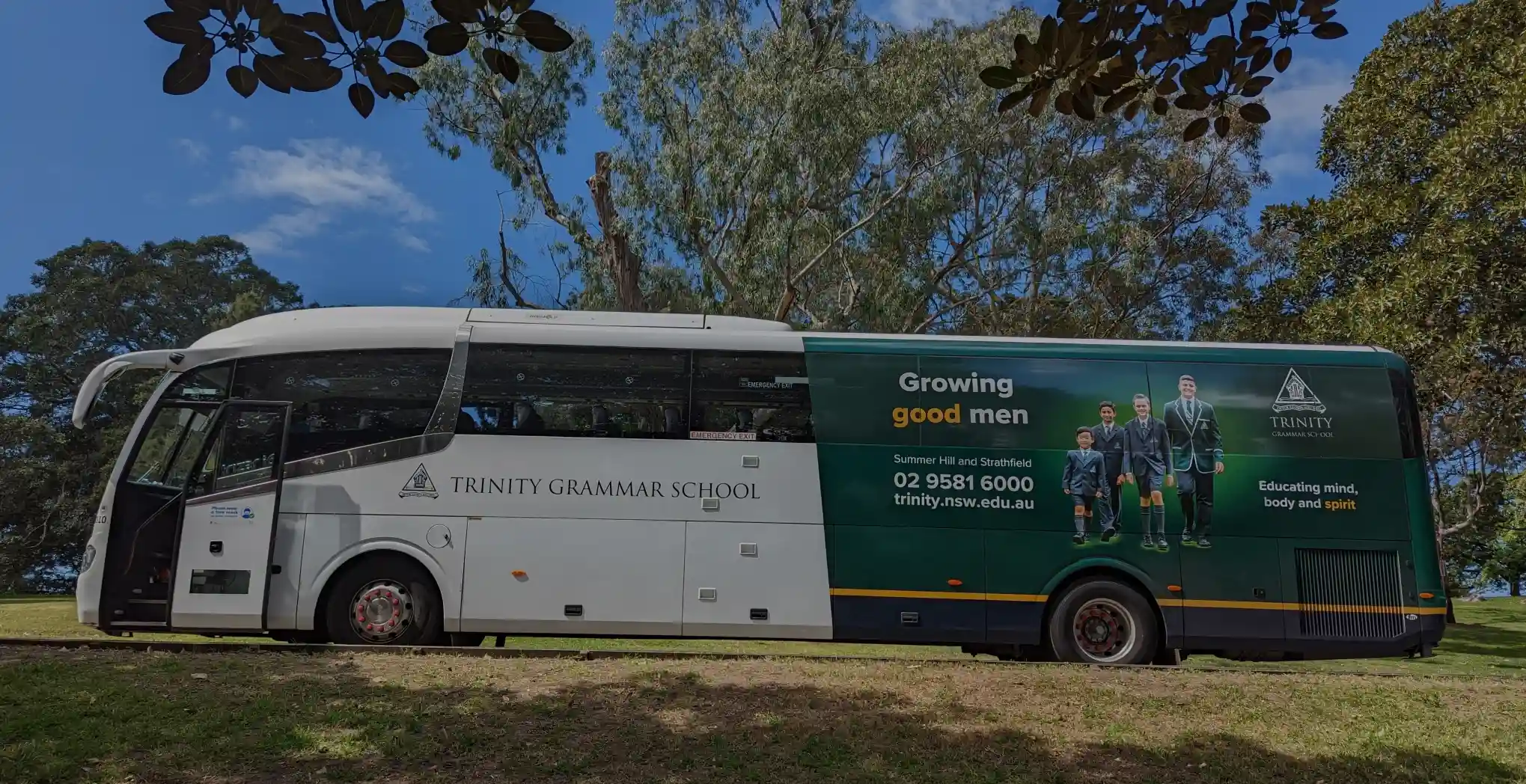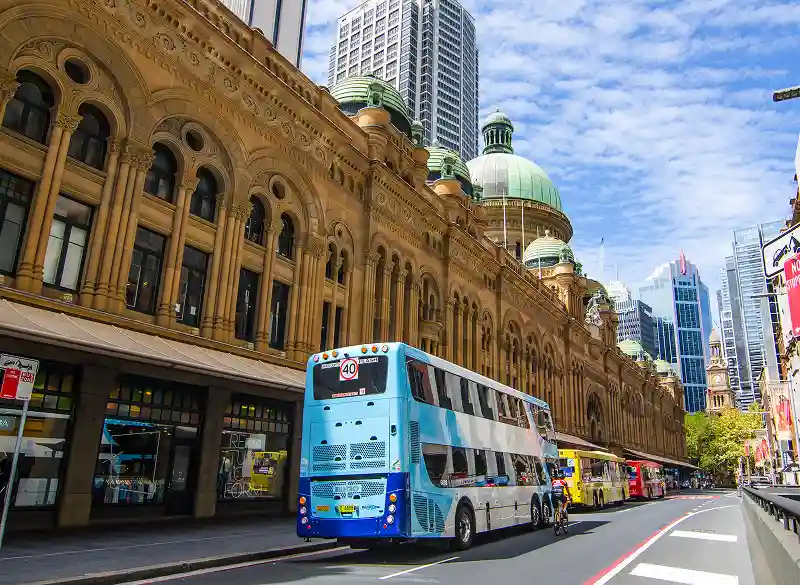
School bus services: can they be improved?
19 June 2025
My almost-teenager just started high school this year, and navigating the school buses in Sydney’s eastern suburbs has been a real learning experience.
Firstly, understanding which school bus options are available within various travel planning apps and websites was a confusing and scattered experience. This somewhat-jarring first impression got me thinking about the whole school bus system, how it works and what it’s for. This article dives into the challenges and considers areas for improvement, especially for high school kids who are more independent and often must travel further.
While our experience is specific to Sydney’s east, similar (and different) issues are likely in regional NSW, other parts of Australia, and even internationally. Different places have their own quirks, but I’d hope the ideas here are a good starting point for a broader discussion.
Current challenges
The school bus network in Sydney’s east caters for multiple schools and draws kids from lots of different suburbs. For my child, there’s one direct school bus that arrives an hour early, another that only covers half the trip and, confusingly, the route numbers swap in the afternoon! Even though it is a single-seat journey, it’s a convoluted, crowded ride. For my daughter, the public bus network, even with interchanges, seems more appealing, especially if you value the flexibility of a regular timetable rather than a specific service.
Safety can be a consideration. Some kids feel safer surrounded by other schoolchildren, while others might prefer the public bus. Conversely, some members of the public may feel more unsafe with schoolchildren around.

Jarrett Walker points out that “bell times” are a major issue, causing peaks in demand that make service provision tricky. The costs of short driver shifts, one-way demand, and underused vehicles add up.
In areas with good public bus networks, like Sydney’s east, specific school bus services might not be necessary. But the peaky demand and scattered home and school locations create planning headaches that may not be well served by a network designed to take commuters to CBDs. If students overload public bus routes at key times, it can inconvenience other users. Permutations of existing routes can efficiently add a little extra capacity at certain times and places but may make navigating the network less transparent and therefore less attractive.
On the other hand, there may be opportunities for opening school bus services to the general public, particularly in regional areas, which could create efficiencies and improve overall public transport. The recent NSW Bus Taskforce Final Report noted that in regional NSW, the School Student Transport Scheme (SSTS) carries few fare-paying passengers but accounts for 90% of passenger trips.
Whatever the details, coordination between school bus and public bus networks is key.
Why we need improvements
If the goal is to reduce car dependency and foster a healthier lifestyle, improving active transport networks by making cycling and walking safer and more attractive will go some way to achieving this . However, there is always likely to be a need for facilitating longer trips.
Often, the focus is on the cost of providing school bus services, which don’t directly generate revenue. But focusing too much on cost can make us miss the bigger picture. Reliable and flexible school bus services can simplify travel for parents and carers, indirectly boosting productivity and potentially reducing the need for multiple cars in a household.
Reducing parent-driven school drop-offs would also ease congestion, benefiting everyone. Plus, getting kids used to buses early on could foster positive attitudes towards public transport, influencing their choices later in life. My kids love public transport now, after five years commuting with them into the city for daycare.
Using data and analytics for improvement
The NSW Bus Taskforce emphasises the important role school services have for public transport provision. They suggest working closely with schools and bus operators to manage changing patterns of demand more effectively.
Data, analytics and modelling could support building an evidence base to improve the school bus and public bus network. But there’s a lack of data to support planning for change. There may be issues with the available ticketing data as, anecdotally, students with free travel cards don’t always tap on and off, making it hard to track usage. Surveys on school trip mode share and student/parent attitudes could certainly highlight areas for improvement, but these can be expensive to administer and digest and are generally implemented in an ad-hoc manner (if at all).
In Transport for NSW’s strategic models, school buses are not a focus, the dedicated routes are removed from the network and the student Opal demand is also removed for consistency. However, this means that the students travelling on the public buses are not properly represented.
At the simpler end of the spectrum, mapping suitably anonymised home and school locations could highlight gaps in provision and inform bus planning without needing complex models. Expected passenger data could then feed into existing bus planning tools, either network-wide or for specific school services. This could be planned for a whole area and integrated with the public bus network, rather than on a case-by-case basis for individual schools. Integrating all requirements for the bus network should lead to the greatest efficiency.
To analyse the wider impacts to proposed network changes, it may be possible to construct an additional school travel demand matrix to supplement a traditional four-stage strategic multi-modal model.
Finally, since household-level transport decisions are complex, holistic modelling of these decisions and their benefits might require a full activity-based model which could simulate the household-level dynamics as parents choose between driving their kids and then onto the office versus letting the kids go on the bus and they themselves can take public transport to work. However, the bus network could likely be improved without this additional insight.
Proposed actions
To help kids travel to school without relying on cars, we should:
1. Collect Data: Investigate existing travel choices and behaviour and understand the problem’s scope.
2. Improve active transport networks and facilities
3. Stagger Bell Times : Coordinate and offset school start and end times to reduce peak demand.
4. Integrate Planning: Include school trips in existing bus service planning.
5. Allow Public Access: Let the general public use school bus services where possible.
To summarise, integrating school bus services with existing networks and adjusting bell times could optimize transport resources, driver, and vehicle needs. Improving independent school travel choices and sustainability requires viewing the issue in the context of the wider transport task. These steps would benefit both kids and society as a whole.



